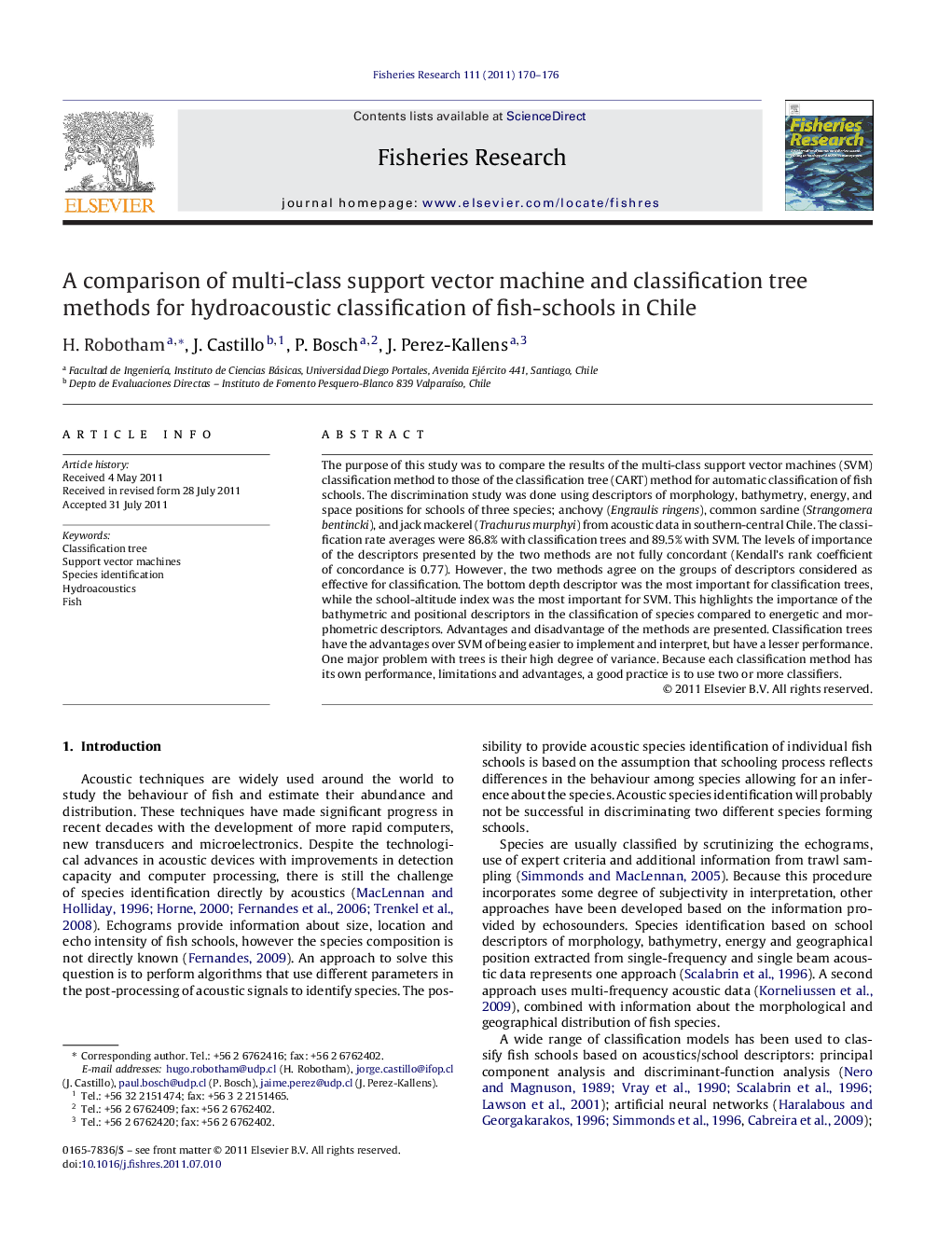| کد مقاله | کد نشریه | سال انتشار | مقاله انگلیسی | نسخه تمام متن |
|---|---|---|---|---|
| 4543500 | 1327150 | 2011 | 7 صفحه PDF | دانلود رایگان |

The purpose of this study was to compare the results of the multi-class support vector machines (SVM) classification method to those of the classification tree (CART) method for automatic classification of fish schools. The discrimination study was done using descriptors of morphology, bathymetry, energy, and space positions for schools of three species; anchovy (Engraulis ringens), common sardine (Strangomera bentincki), and jack mackerel (Trachurus murphyi) from acoustic data in southern-central Chile. The classification rate averages were 86.8% with classification trees and 89.5% with SVM. The levels of importance of the descriptors presented by the two methods are not fully concordant (Kendall's rank coefficient of concordance is 0.77). However, the two methods agree on the groups of descriptors considered as effective for classification. The bottom depth descriptor was the most important for classification trees, while the school-altitude index was the most important for SVM. This highlights the importance of the bathymetric and positional descriptors in the classification of species compared to energetic and morphometric descriptors. Advantages and disadvantage of the methods are presented. Classification trees have the advantages over SVM of being easier to implement and interpret, but have a lesser performance. One major problem with trees is their high degree of variance. Because each classification method has its own performance, limitations and advantages, a good practice is to use two or more classifiers.
► SVM classification method and classification tree methods were used to separate pelagic fish school.
► The SVM performance was 2.7% higher than classification tree.
► The levels of importance of the descriptors presented by the two methods are not fully concordant.
► Bathymetrical and positional descriptors are the most important.
► A good practice is to use two or more classifiers for acoustical surveys.
Journal: Fisheries Research - Volume 111, Issue 3, November 2011, Pages 170–176